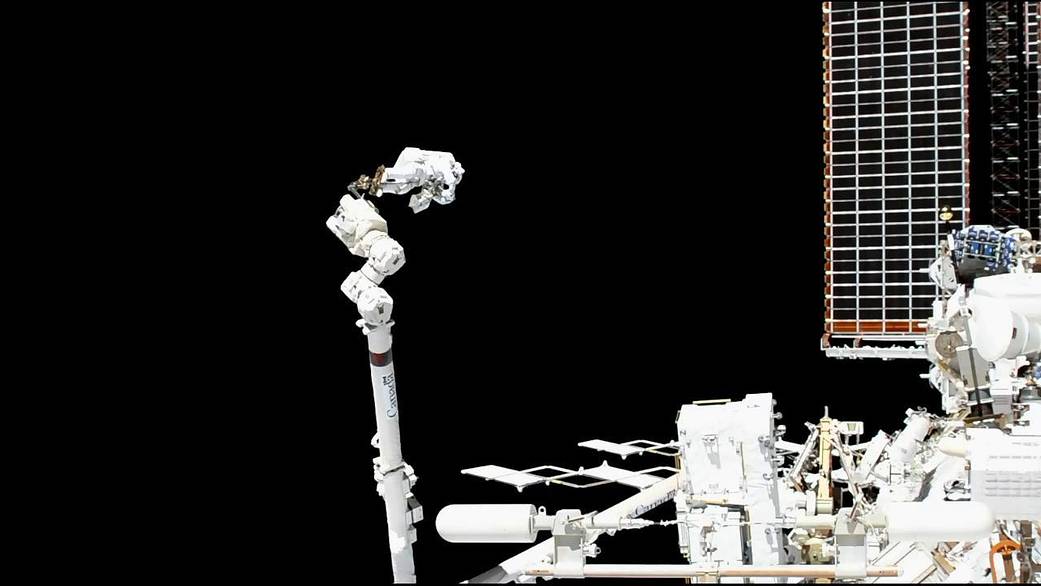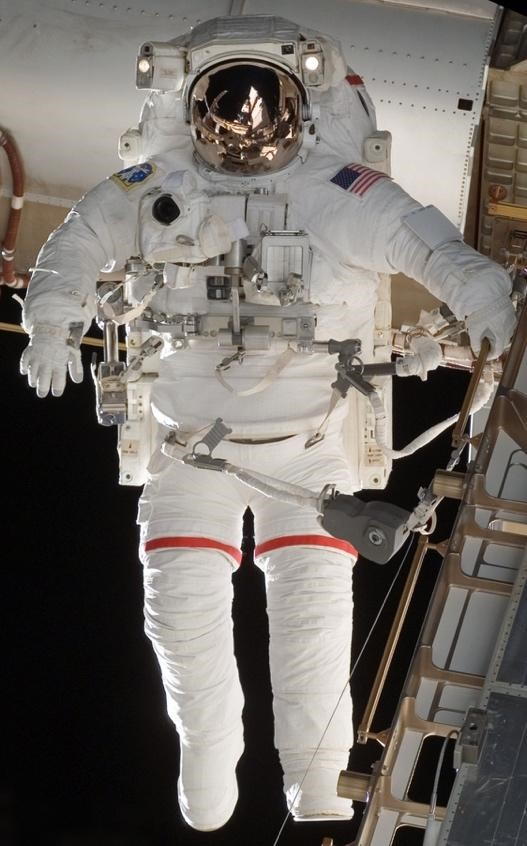Suits Through the Eras, Part II: The Builder
This is part two of a three-part series. Look for the next installment in mid-December.
 During the first two decades of space exploration, we achieved what most considered to be impossible. We safely sent humans into space, conducted spacewalks, traveled to the Moon and back and routinely accessed low-Earth orbit (LEO). This success drove a shift in NASA’s focus to living and working in space. As a result, the next phase of space exploration included the construction of the International Space Station (ISS).
During the first two decades of space exploration, we achieved what most considered to be impossible. We safely sent humans into space, conducted spacewalks, traveled to the Moon and back and routinely accessed low-Earth orbit (LEO). This success drove a shift in NASA’s focus to living and working in space. As a result, the next phase of space exploration included the construction of the International Space Station (ISS).
The Architect – The EMU
Establishing an indefinite presence in LEO through the development of the space station would require the transportation of large items into space and the reliability to conduct repeated missions in quick succession. The space shuttle became that “trusty steed,” and has been the only reusable, winged and crewed vehicle to have orbited Earth and achieved landing. The shuttle provided the transportation for the components of our new home in space. But the construction of the station would also require something new: a more capable spacesuit. The new suit, named the Extravehicular Mobility Unit (EMU), became a trusted personal spacecraft for the Shuttle and ISS Programs.
The EMU has been a true workhorse, providing service for 38 years and counting. The suits were originally designed for use on a single shuttle mission, and then required major servicing. Technology upgrades and enhancements extended performance parameters from a one-time use per mission to a six-year service life on the space station, with maintenance being performed by the astronauts in space—a significant achievement and a testament to the outstanding engineering of the original design. The EMU was instrumental in the assembly and maintenance of the orbiting laboratory, which required more than 160 spacewalks to complete. Today, at least four EMUs permanently reside on station, always ready to perform the next mission task, maintenance or repair on our home in space.
Building Our Home
This spacesuit (at top right) made its first appearance in 1981. On Earth, the suit weighs in at approximately 249 pounds, but is weightless during spacewalks. On the ground, it would be very difficult to accomplish tasks in equipment this heavy. This is one of the benefits of weightlessness, allowing crew members to perform required tasks while being safely transported within their personal spacecraft. The EMU is comprised of a great deal of technology that includes advanced life support capability. Some of the elements of the suit are a pressure system, thermal regulation, oxygen, drinking and cooling water, waste collection (including carbon dioxide) and electrical power. The suit maintains the “Snoopy cap” communication system feature from the Apollo era.
The EMU was designed for microgravity work on an engineered surface; it was not intended for surface exploration. In this capacity, limitations are present in the current EMU design, including relatively poor mobility and weight. Though it is weightless in LEO, the suit sometimes presents physical restrictions for astronauts while they accomplish their tasks. The multiple layers of materials required to make the suit safe also work against flexibility and mobility when pressurized. While in the suit, the pressurization and resistance can make a movement we would consider simple on Earth (like reaching over to touch your opposite shoulder) a workout! The lower torso of the suit was designed with limited mobility, since actual walking is not necessary in LEO. On the space station or during spacewalks, being weightless means you do not need to walk to move around. The lower torso of the suit does, however, serve an important role. The boots are designed to clip into “stirrups,” or foot restraints, and provide needed stability for the astronaut to focus on what they’re working on. As missions to planetary surfaces begin, suits of the future will have to accommodate—and take advantage of—the effects of gravity. Soon, astronauts will need to walk, kneel and explore, much like a geologist would on Earth.

Station Commander Luca Parmitano of ESA conducts repairs while attached to the space station’s robotic arm during the first spacewalk to repair the Alpha Magnetic Spectrometer on Nov. 15, 2019. He and NASA astronaut Andrew Morgan (out of frame) worked for more than six hours outside the International Space Station. Image Credit: NASA
Where to Next?
The EMU has been in service for more than 38 years, growing with the missions it has supported during its lifetime. It still continues to play a critical role for the ISS Program, and is the unsung hero of both the space shuttle and station missions.
NASA’s next spacesuit will incorporate lessons learned from the EMU experience, new technologies and innovations. These improvements are required for future missions that include planetary surface exploration, habitat construction and maintenance. The new suit was made for walking and exploring, and thus, is called the xEMU (Exploration Extravehicular Mobility Unit). It will support our new excursions and be able to take us wherever we want to go next—like the Moon in 2024. The xEMU is ready… and so are we.








